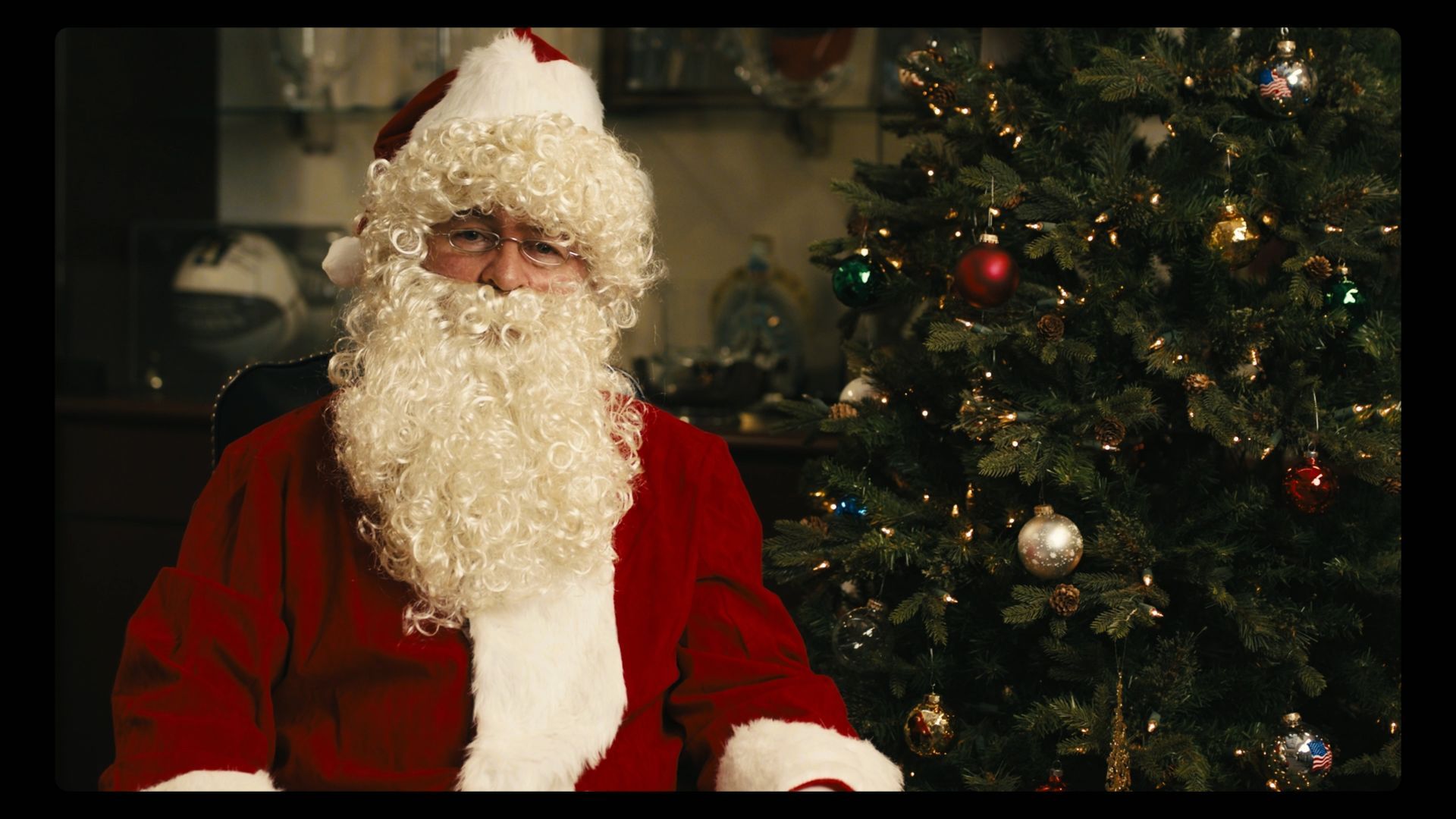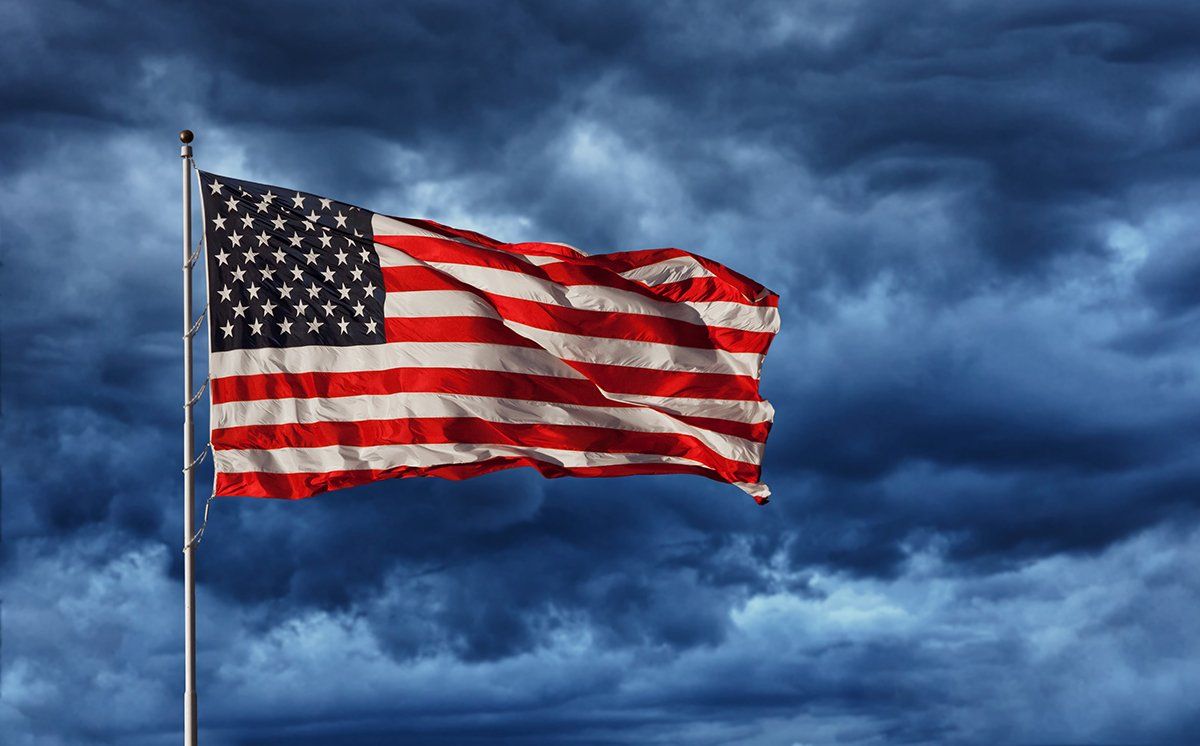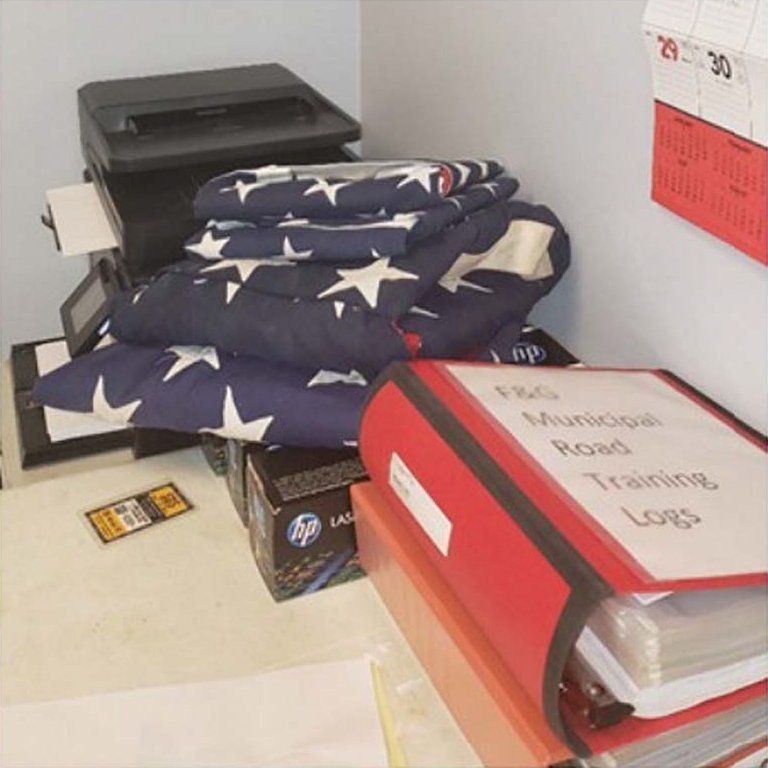FOURTH OF JULY TIP: FLAG DISPOSAL
On a recent site visit in Waterbury, John Pizzimenti noticed a stack of American flags on Chris Follen’s desk. When he asked what they were for, Chris stated that they were all pulled off the tipping floor. Chris offered a little more insight into why they are pulled off the floor, and what it means to him personally to make sure they are properly disposed:
When I was a teenager, I wanted to follow in my father’s footsteps- he was in the United States Marine Corp (1964-1969), so I joined an organization called Young Marines sponsored by the Marine Corp League. Most of the adults were retired or former Marines. This organization promotes all the qualities teenagers need to develop, including myself, and promote becoming disciplined, respectful, handle authority and physically fit while gaining a greater understanding of sacrifice. Putting others before themselves. They put those who want to be part of something bigger on the path to Parris Island. The Young Marines teaches self-discipline, a respect for others, and Parris Island makes Marines. I joined at the age of 14 until I was eligible to walk into a recruiting station.
As a kid, my father would always tell me never let the flag touch the ground. I didn’t understand why at the time, I thought it was just out of respect for our great country and I didn’t want to get yelled at if he saw it dragging on our deck.
When the Marine Corp League office in White Plains, N.Y. started putting flag drop off containers at some post offices in Westchester, we painted them in U.S.M.C. scarlet and gold and marked them as such. When they were filled, the flags would be properly disposed of. Here is the proper protocol and procedure for flag disposal. I have found out that most V.F.W.’s and American Legion posts also have flag drop off bins.
When disposing of the flag, DO the following:
- Fold in the traditional triangle for stowage, never wadded up.
- Proper disposal is by fire. It is important that the fire be fairly large and of sufficient intensity to ensure complete burning of the flag.
- Place the flag on the fire.
- The individual(s) disposing of the flag come to attention, salute the flag, recite the Pledge of Allegiance, and have a brief period of silent reflection.
- After the flag is completely consumed, the fire should then be safely extinguished, and the ashes buried.
- Please make sure you are conforming to local/state fire codes or ordinances.
- June 14 is Flag Day and is the most appropriate day for this ceremony.
I started collecting flags from the waste stream years ago because as marines we took an oath to protect what it stands for. The poem by Francis Scott Key which later became the Star-Spangled Banner explains why we never let the flag touch the floor, let alone be thrown out in the trash. I guess I made it a silent personal crusade to save as many flags as I can out of respect for those who have defended and all who have protected her. I have instructed the guys I work with to save any flags we see.
This 4th of July please keep those who are protecting our Flag in your thoughts.




